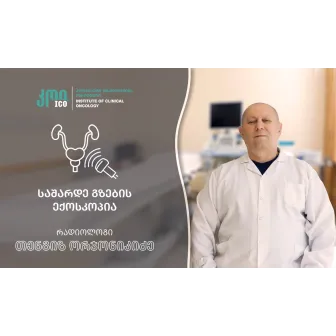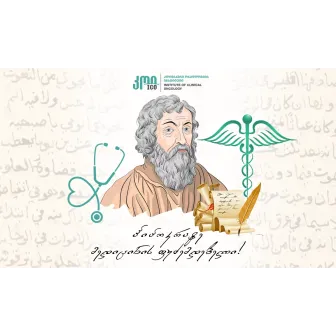What are the types of anemia and how are they diagnosed – this is the topic we are discussing with the doctor-laboratorian of the Institute of Clinical Oncology Marika Chipashvili.
- What is anemia
Anemia is a condition, when the body experiences a lack of blood. This is when the rate of hemoglobin and/or red blood cells in the blood is decreased, leading to a lack of oxygen in the tissues.
- What are the types of anemia?
There are 5 main types of anemia:
1.Iron deficiency anemia, which constitutes the majority of anemia cases. It can be caused by malnutrition, extended menstrual cycle or chronic gastrointestinal bleeding; ingestion problem (celiac disease), gastrointestinal diseases. In such cases the patient complains of fatigue, and the skin is pale, and dry. Skin and hair damage is observed.
2. B12 and folate deficiency anemia. It is also called megaloblastic anemia, as in such cases, abnormally large red blood cells are formed in a bone marrow. Disease can be caused by: low intake of products containing vitamin B12 and folic acid. Autoimmune disease - pernicious anemia, when the body produces autoantibodies that destroy the protein necessary for the absorption of vitamin B12 (intrinsic factor), so the received B12c annot be absorbed. Alcoholism, worm infestation, small intestine disease.
- What are the symptoms of Vit B12- deficiency anemia? Nervous system damage, reduced sensitivity, memory problems. Feeling of cold and tingling in the extremities.
3. Hemolytic anemia occurs when there is an increased breakdown of red blood cells. It can be caused by hereditary diseases that result from genetic defects in the erythrocyte membrane, hemoglobin, or other components. This group implies thalassemia, microsphaerocyties, sickle cell anemia, etc.
There are also acquired forms of hemolytic anemia, which is caused by autoimmune disorders (when the body attacks its red blood cells and causes their breakdown). Some infections or medications, also damage the red blood cell membrane. This type of anemia is characterized by jaundice (as the breakdown of red blood cells produces a large amount of bilirubin). Therefore, the color of the urine also becomes dark.
4.Aplastic anemia (when insufficient blood cells are produced) that can be caused by bone marrow diseases, radiation exposure, chemotherapy, viral infections, hepatitis, HIV Symptoms: increased susceptibility to infections, easy bleeding, general weakness.
5. In addition to the above-listed causes, there is also anemia associated with chronic disease that can result from chronic infections, kidney disease (rheumatoid arthritis), and oncology diseases.
- How should we differentiate anemia?
Laboratory tests are necessary to differentiate anemia. First of all, a general blood test is performed, and attention is paid to hemoglobin, erythrocyte, hematocrit, and mcv, mch (mean erythrocyte volume, size, hemoglobin content in erythrocytes). Based on these indicators and clinical symptoms, additional tests are prescribed to determine the content of iron, ferritin, vitamin B12, and folic acid.
- What are iron and ferritin and what role do they have in our body?
Iron has several roles in our bodies. Most importantly, it is essential to produce hemoglobin and bind with oxygen. Iron is involved in various enzymatic processes. It is also important for the immune system. In addition to hemoglobin, 1% of the iron in our bodies is contained in myoglobin. This is a protein that carries and stores oxygen in muscle tissue and uses it during physical exertion.
Ferritin is an iron-storage protein. It stores free iron from the blood in the liver and spleen and releases it when needed. In addition to the storage properties, ferritin plays an important role in defense reactions against pathogens. Therefore, iron and ferritin blood tests are performed in various inflammatory and infectious processes.
Low ferritin level indicates iron deficiency anemia even when the iron level in the blood is not reduced. High ferritin level indicates iron overload, inflammatory or tumorous processes. It is also high in case of megaloblastic, hemolytic, and sideroblastic anemias, and thalassemia. In iron deficiency anemia, sometimes it becomes necessary to perform additional testing for the iron-carrying protein - transferrin, which carries iron released from the destruction of red blood cells to the bone marrow. Part of it is included in the composition of ferritin. Along with transferrin test, transferrin saturation test is also performed. In iron deficiency anemia, transferrin level in the blood is increased, and its saturation is low.
What is Vit B12?
Vit B12 (Cyanocobalamin) is a water-soluble vitamin, necessary for the nervous system, blood formation, and synthesis of genetic material (DNA). It participates in fat and protein metabolism, and regulation of amino acid homocysteine (an excess of the latter leads to damage of blood vessels and increases the risk of heart attack and stroke).
- What are the sources of Vit B12?
Food of animal origin, seafood, eggs, dairy products.
Vitamin B12 deficiency anemia is marked by low hemoglobin and red blood cell levels, increased size of red blood cells (macrocytes), and hypersegmentation of white blood cells. In case of prolonged deficiency, decreased levels of vitamin B12 and folic acid in the blood are also characteristic.
- What are the characteristics of hemolytic and aplastic anemias and how are they diagnosed?
In hemolytic anemia, as already mentioned, for various reasons, the breakdown of red blood cells goes faster than they are formed, which leads to the development of anemia. As a result of the increased breakdown of red blood cells, bilirubin is formed, which can cause slight jaundice, which requires the determination of bilirubin level in the blood. In addition, due to enhanced erythropoiesis in the bone marrow, the number of reticulocytes (slightly imatured forms of red blood cells) increases. The presence of all these indicators confirms the presence of hemolytic anemia. To confirm autoimmune hemolytic anemia, it is necessary to check for special antibodies (Coombs test).
In case of the aplastic anemia, a general blood test is performed when symptoms of anemia are detected. If it occurs that the number of all blood cells is decreased, the bone marrow is examined. If these tests also confirm a sharp decrease in the number of cells, aplastic anemia is diagnosed.
Thus, anemia is a multifaceted disease and its proper treatment requires laboratory testing, including clinical, biochemical, and immunological blood tests.
- Views:11068

















